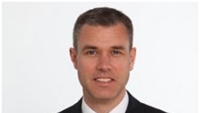UK regulator calls for single frequency DTT across Europe

A call for a complete overhaul of Europe’s Single Frequency (SFN) plan for Digital Terrestrial TV (DTT) has been made by Ed Richards, chief executive of the UK communications regulator Ofcom. Addressing the European Competitive Telecommunications Association (ECTA) regulatory conference, Richards said such a move was becoming possible because of migration to the second generation DVB-T2 terrestrial standard and also MPEG 4, increasing capacity through more efficient encoding and compression.
SFN operation allows more efficient use of spectrum because neighboring areas can transmit each channel at the same frequency without causing interference. But, for greatest effectiveness in a region such as Europe with many relatively small countries, there has to be cross border frequency planning. Harmonization around a single-frequency plan will also provide a solid framework for European countries to add their own further enhancements, and also for the continent as a whole to start looking ahead perhaps to the next generation of DTT technology.
“As we begin to contemplate the possible co-existence of Digital Terrestrial Television and mobile services in the 600MHz to 700MHz bands, we need to think about the changes that lie not very far beyond this,” said Richards. “These will come about as much as a result of smaller, technologically driven developments as by international harmonization agreements.”
Richards pointed out that local TV companies were looking to make more intensive use of interleaved spectrum. More significantly, Richards also highlighted the importance of DTT frequency harmonization for exploiting “white space,” the gaps between the bands designated for TV and radio broadcasts. According to Ofcom itself, these bands have twice the range of current wireless technologies, including WiFi technology, and so may provide the answer to the problem broadband access in rural areas.
Ofcom has been promoting white space in the UK, where, in June 2011, one of the largest commercial tests of white space Wi-Fi was conducted in Cambridge by Microsoft. This was backed by a consortium including Nokia, satellite operator BSkyB, the BBC and incumbent UK Telco BT.
Ofcom's proposal is that Internet Service Providers (ISPs) will have permission to use these bands of unlicensed white space for data and video services, sharing the spectrum with licensed operators. The proposal specifies a central online hosted database, to which devices must reveal their location so that the system can allocate available frequencies and decide how much power can be used without causing interference with neighboring services, including licensed ones. The database has to be careful to ensure no TV interference occurs, and will have the ability to shut down white space devices if interference is detected. The idea is that this system will avoid the need for a license, but to scale up to European operation this common SFN plan will be required.
Richards said that such an SFN scheme could also prepare the ground for third generation DTT.
Get the TV Tech Newsletter
The professional video industry's #1 source for news, trends and product and tech information. Sign up below.
“We might even look to the end of second-generation transmission, and the shift to even more efficient third generation standards, including Multiple Input, Multiple Output (MIMO) antennae and High Efficiency Video Coding compression,” said Richards.
